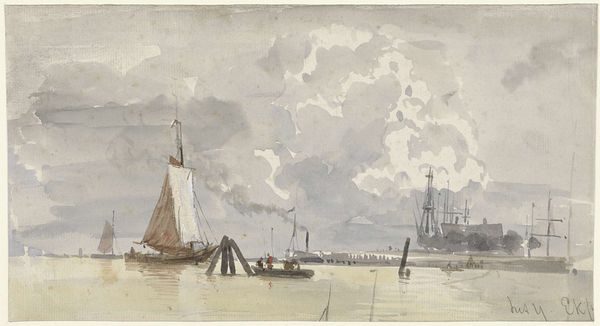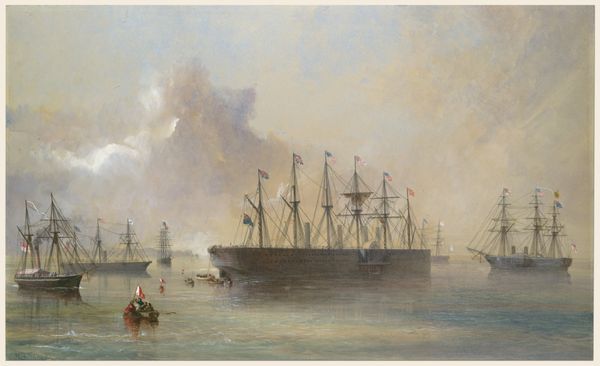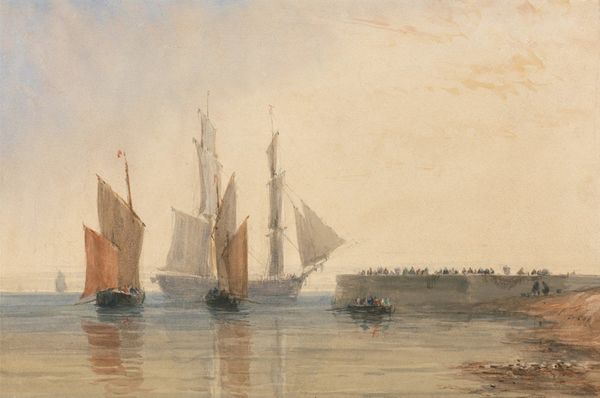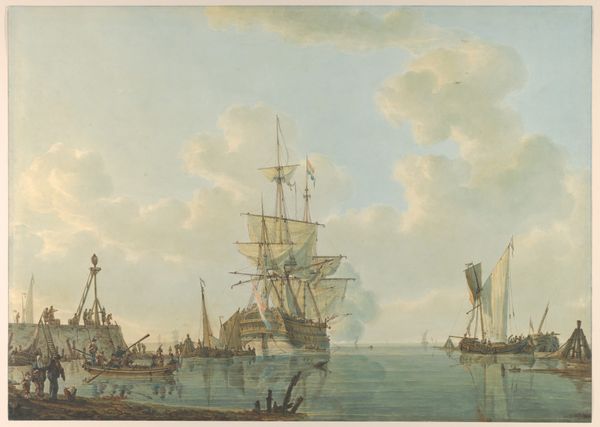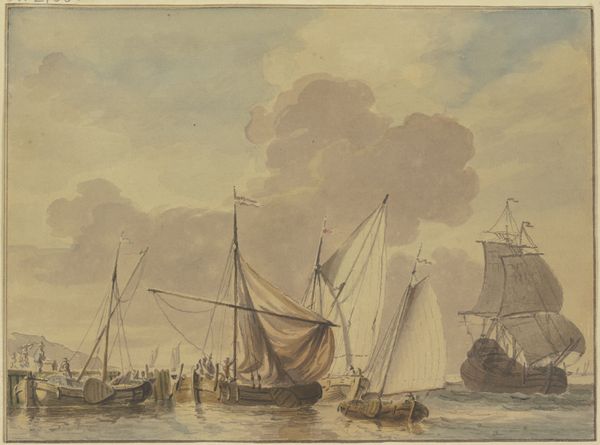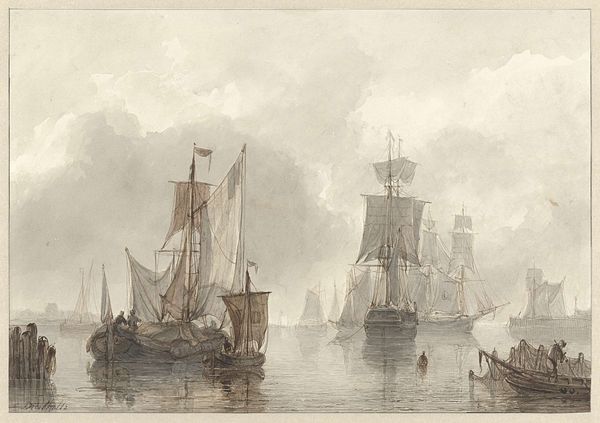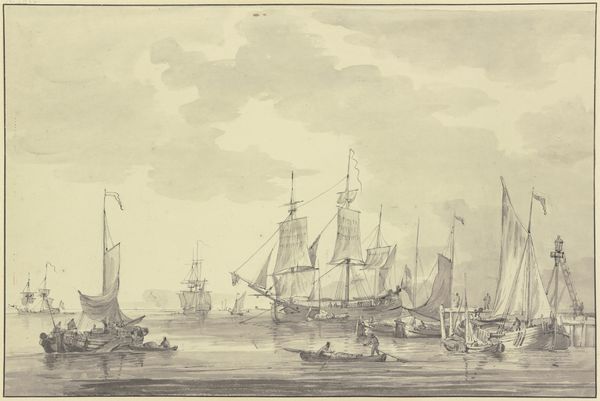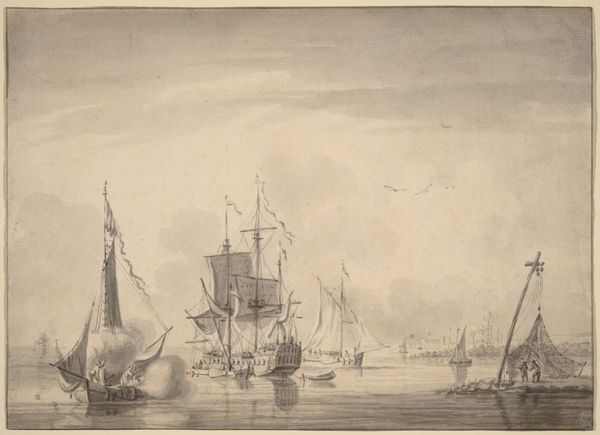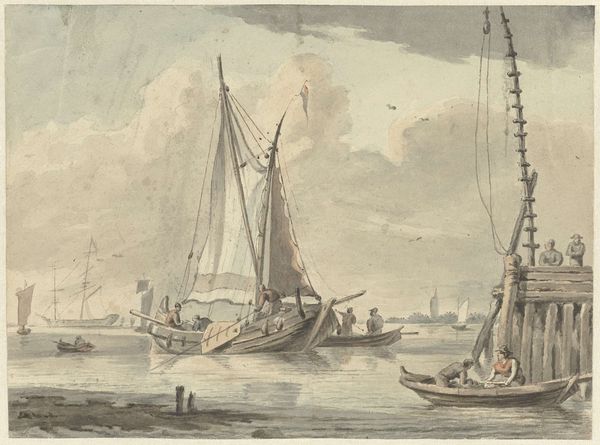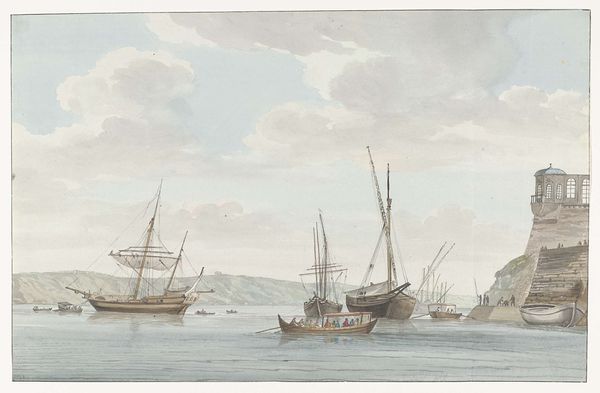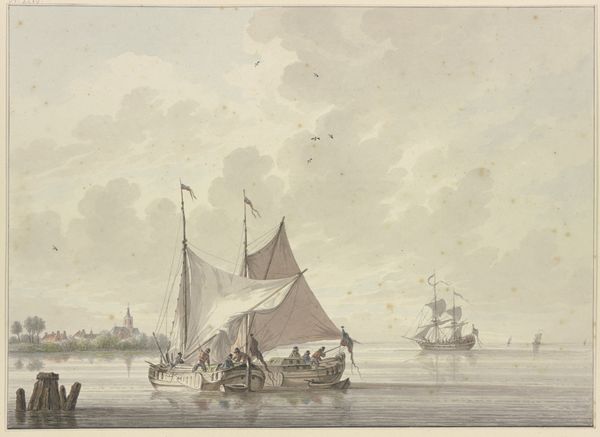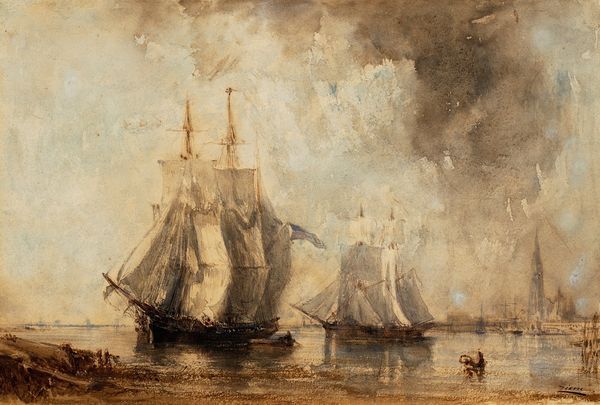
Maas voor Rotterdam, met een Amerikaans en Zweeds schip 1834 - 1893
0:00
0:00
Dimensions: height 397 mm, width 547 mm
Copyright: Rijks Museum: Open Domain
Editor: So, this is Willem Anthonie van Deventer's watercolor, "Maas voor Rotterdam, met een Amerikaans en Zweeds schip," dating sometime between 1834 and 1893. It has a breezy, almost melancholic feel, doesn’t it? I'm curious, what catches your eye about it? Curator: The material history, definitely. Think about Rotterdam during that period. It was a burgeoning port city, vital to international trade. This watercolor isn't just depicting ships; it's capturing the movement of goods, the global exchange facilitated by those vessels. Editor: How does the medium, watercolor, influence our understanding? Curator: Precisely! Watercolor, often considered less 'serious' than oil, allows for a swiftness of execution, perfect for capturing the fleeting atmosphere and the sheer industriousness of the port. Consider also that the labor wasn't solely that of the artist, but extended to sailors, merchants, and laborers on the docks, all shaping the economic reality. Editor: I never considered how many hands were indirectly involved in making this image, just by depicting its subject. So the choice of watercolor becomes less about aesthetics and more about…efficiency, perhaps? Curator: Exactly! And that efficiency echoes the port's efficiency. The social context *is* embedded in the materiality and process of the work. Notice how the ships, the central subject, also symbolize power, industry, and perhaps even colonial ambitions? It’s not just a pretty picture. It reflects the realities of production and trade during a specific historical moment. Editor: That gives me a whole new perspective. I was focusing on the romantic aesthetic, but you've highlighted the economic and social structures at play. Thanks! Curator: It's about looking beneath the surface. Consider the materials and labor and their entanglement with history. That’s where the real story lies.
Comments
No comments
Be the first to comment and join the conversation on the ultimate creative platform.

